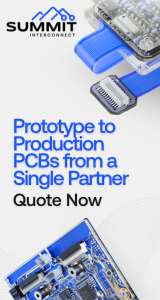|

|
|
| Ask the Experts | |||||||
|
|||||||
|
March 18, 2009 - Updated March 15, 2009 - Originally Posted IPA to clean 'lead-free'In our company all our products are RoHS compliant and for soldering we are using lead-free no clean flux and lead-free solder. Is there specific IPA to clean "lead-free" PCB's? Is it needed? R.P. |
|||||||
| Expert Panel Responses | |||||||
|
Cleaning no-clean lead-free soldering materials is a very common practice in the industry. While it may not seem logical to clean no-cleans, everybody does it, primarily after rework and repair. For most companies, the solvent of choice is isopropyl alcohol, also called "IPA." I assume you cleaning your PCBs with a small brush and a little bottle of alcohol, or sometimes in an open top cleaning machine of some sort. In that case, you will find there are at three main problems with alcohol: First, alcohol is "hygroscopic." This means it absorbs water from the air, which dilutes the alcohol and weakens its ability to clean. Alcohol also is often diluted commercially by 20% or more, to keep the price down, which makes it even weaker. Make sure you specify the purest, most water-free alcohol you can find. Secondly, alcohol is a very weak cleaner. It has a low Kb value (some sources say a Kb of 50, others say as low as 20, which means it barely cleans at all) and it saturates with flux residues at 2% by weight. So it takes a lot of solvent to successfully clean a typical circuit board. It's not the cost of the solvent that is the issue -- it's the cost of time lost cleaning inefficiently. Thirdly, alcohol is flammable, with a flashpoint of 15 degrees C. So, if you MUST use alcohol, use it properly. SPECIFY only reagent-grade alcohol, which is more than 99% water-free. Keep any containers tightly sealed, so the solvent doesn't absorb water from the atmosphere. Change the solvent often on the workbench. Keep all containers and brushes clean. NOTE: Do not "upgrade" to methanol. Methanol is another type of alcohol and it's cheap and it's a great cleaner, but it is poisonous. Lastly, consider switching to more modern solvents (from MicroCare, Zestron, Kyzen, Petroferm, or whomever you wish) that will have higher Kb values, faster drying, and safer handling than alcohol.
Vice President Micro Care Mr. Jones is an electronics cleaning and stencil printing specialist. Averaging over one hundred days a year on the road, Mike visits SMT production sites and circuit board repair facilities in every corner of the globe, helping engineers and technicians work through the complex trade-offs today's demanding electronics require.
Your question is very timely. No-clean flux leaves behind residue. In many cases, the residue does not cause harm to the assembly. In many other cases, the residue does cause harm via electro-migration / leakage failures, dendrites, poor adhesion of conformal coating, etc. The degree to which no-clean flux may be successfully left on an assembly is lessened when the alloy being soldered is lead-free. This is due to the increased reflow temperatures causing the flux to harden before "absorbing" the metal salts created during reflow. This residue is not easily removed. IPA is among the worst "solvents" to remove residue for two reasons. First, IPA as a solvent is weak. IPA is known to react with some materials on the board (including flux) by creating a white residue. Secondly, as IPA is nearly always applied in a manual cleaning process, more of the time flux is at best diluted and spread around the board. Proper thorough cleanliness is seldom achieved with an acid brush and IPA. There are not too many manual processes that provide consistency and thoroughness. Finally, IPA is a VOC, heavily regulated in many states, and is flammable. There are many machines available today that will remove all of the flux residues (and the dozens of other residues stowed away on the assembly). These machines not only remove the flux, but some also conduct real time cleanliness testing to ensure the thorough removal of flux and defluxing chemicals.
President Aqueous Technologies Mr. Konrad has been in the electronic assembly equipment industry since 1985. He is founder and CEO of Aqueous Technologies Corporation, a manufacturer of automatic de-fluxing equipment, chemicals, and cleanliness testing systems.
No clean fluxes are designed to stay on the board. These residues are non conductive and non corrosive. I would suggest that you don't clean these boards. If you do there are a number of companies, like Kyzen that make cleaning agents which will readily remove this residue.
President FCT Assembly Mike Scimeca created FCT Assembly after the purchase of Fine Line Stencil, Inc., and consists of two major operations: stencil manufacturing and the manufacturing of electronic assembly products such as solder paste, flux and solder bar.
Reader Comment
If solder paste disturbed board put be scraped in my company.....while that types of pcb's are clean by using IPA and it will run through SMT process is my suggestion..is it correct or not ?
Selvavinayakam, Visteon Automotives Systems Ltd. India pvt
|
|||||||
| Submit A Comment | |||||||
|
Comments are reviewed prior to posting. You must include your full name to have your comments posted. We will not post your email address. |
|
Free Newsletter Subscription
Circuitnet is built for professionals who bear the responsibility of looking ahead, imagining the future, and preparing for it. Insert Your Email Address |
|

|





